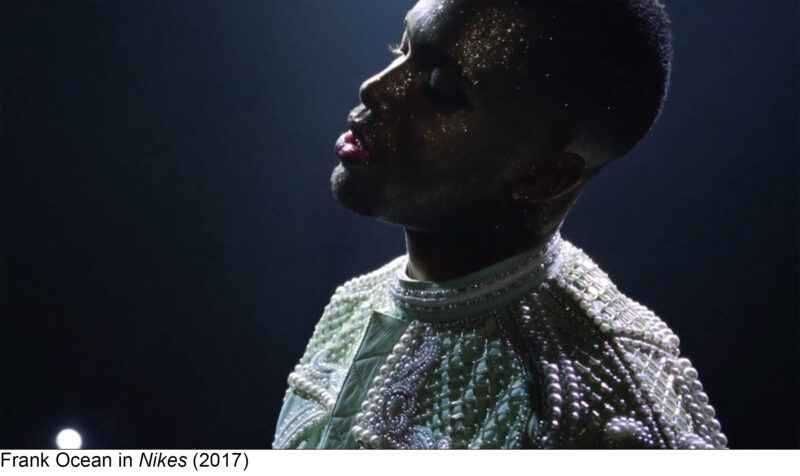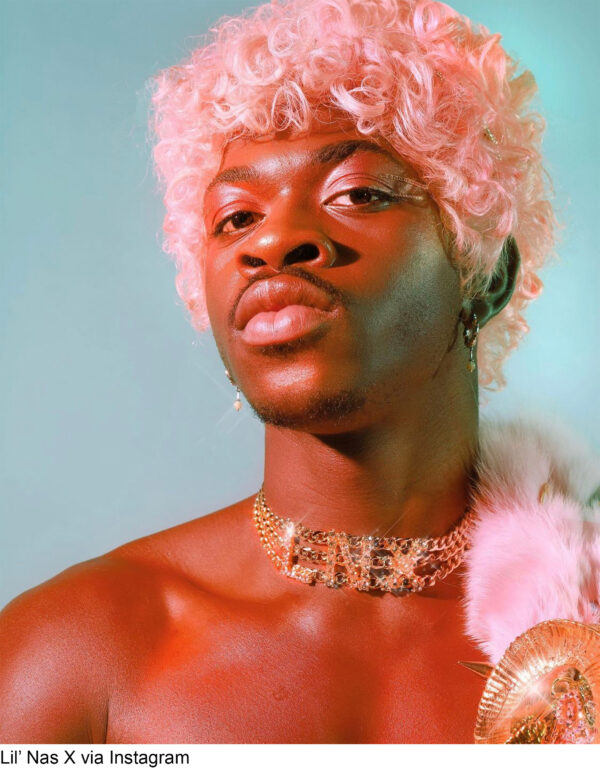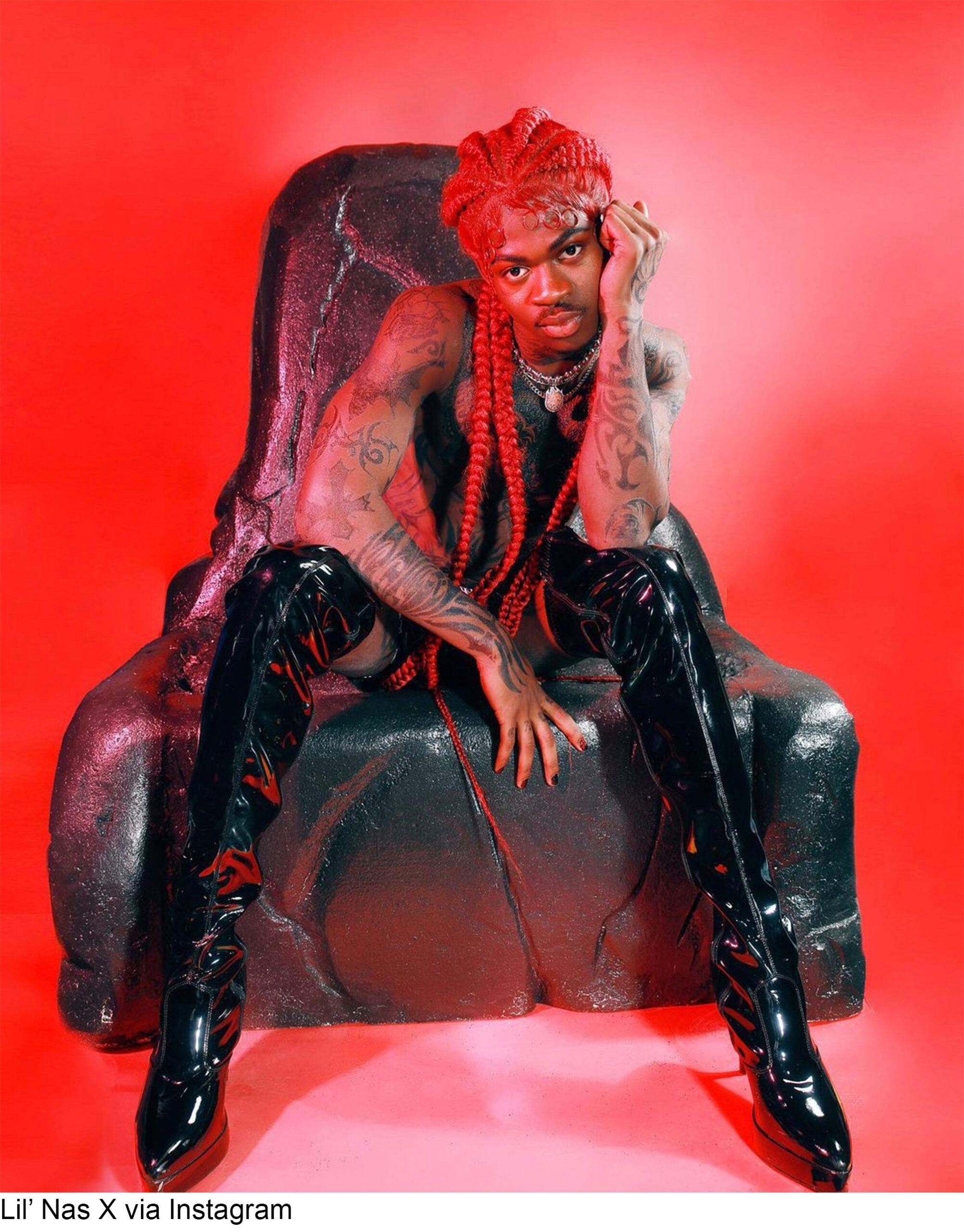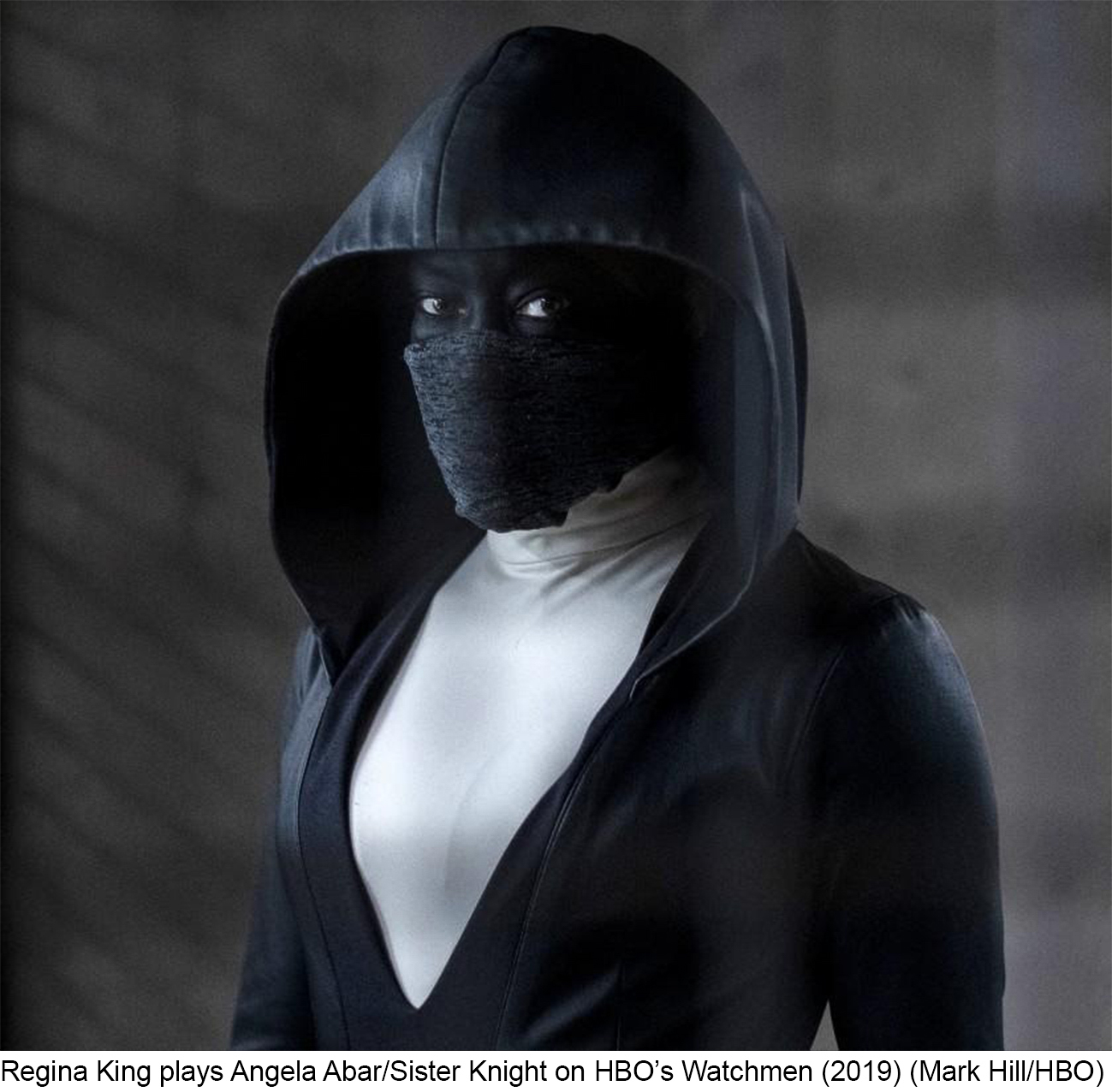By Riel Flack, Editor
As I was watching Lil Nas X’s Montero (Call Me By Your Name) music video, I couldn’t help but be reminded of a similar ground-breaking piece of queer art in hip-hop-that is, Frank Ocean’s Nikes (2017) music video. Directed by Tyron Lebon, it prominently features various shots of Frank Ocean shining, and naked glistening bodies in a montage style. The dimly lit and highly colourful video elicits a heightened state of emotion and vulnerability as it intimately and closely films its subjects. This dramatic lighting technique enhances the shine, glitter, oil, sweat, and tears that we repeatedly see decorated on the sexualized queer bodies skin as they intimately embrace. Frank Ocean’s face is decorated with glitter, a woman’s naked body painted in glitter, an androgynous person oiled up lying in a bed of dollar bills, the shine from Frank Ocean’s tears, people’s bodies dripping in rain and glitter, and a muscular man covered in oil and sweat. The use of shine indicates that Nikes is a work that desires to be seen; the shine is simply beautiful-one can’t help but be attracted to the vibrant lights reflecting off the subject’s bodies. Comparably, in Lil Nas X’s video we open on him in a dazzling sequence body suit, glistening in a pink Rococo era costume, and witness him give Satan a lap-dance in thigh-high patent leather boots. Just like Nikes, Montero weaponizes its intimate images of shine, and demands that you carefully reflect upon it.

The images in Nikes and Montero shine just like other contemporary hip-hop images often do through costuming with luxurious diamonds, jewelry, and displays of oiled up sexualized bodies. Author Krista Thompson in “The Sound of Light: Reflections on Art History in the Visual Culture of Hip-Hop” explores how looking at popular depictions of works of European art in hip-hop reveals what hip-hop’s surface aesthetics reflect about ways of seeing and representing). She notes that artists have used shine to emphasize the materiality of objects and their haptic quality. Yet, Nikes and Montero offer different interpretations of these “traditional” hypersexualized and often materialistic images of shine seen in hip-hop. Rather, Nikes and Montero use shine to highlight the rejection of clichés and tropes that have been previously established in hip-hop’s visual culture. They display queer people shining and glistening, demanding to be seen in their beauty regardless of who they claim to be. Just as Nikes did in 2017, Montero enacts a reappropriation of representation seen in hip-hop culture by using the same methodology of shine exemplified in traditional images to create space for such complex identities to exist.
Hip-hop has often been represented in ways that emphasize its misogynistic, homophobic and sexist rhetoric. Queer representation in hip-hop challenges such damaging notions and thus creates an open space in hip-hop for transitional bodies. In the critically acclaimed documentary Paris is Burning (1990) Venus Xtravaganza touts “Touch this skin honey, touch all of this skin. You just can’t take it!” as she sexually basks in the sun, showing off her glowing skin.
In Hype Williams’ visually stunning Belly (1998) Tommy (DMX) and Kisha (Taral Hicks) are often seen covered in oil, hypersexualized under the gaze of the camera. Symone, a current finalist in RuPaul’s Drag Race, struts down the ball runway in dazzling looks just as Megan Thee Stallion and Cardi B do in WAP.
In each of these images we see the subjects moving their bodies to show off their glowing skin and shining outfits. Author Scott Bryant-Poulson notes that there are endless parallels between the drag and hip-hop scene in popular culture. He explores how black voices in hip-hop have mapped their own genre of blackness, and this same music has become the background soundtracks for gay and trans bodies voguing, modeling, and cross-dressing in the spaces of drag balls. Bryant-Poulson states that black bodies in both communities “have had to walk and have historically used the dregs of society handed to them to create culture, one could argue that the black community held onto the rhythms of disco and developed their own pop culture odes to glamour, to idealization”. From this understanding, both communities have repurposed the tools handed to them and created their own genre of glamour as a notion of power and agency. Each group has had to reappropriate space to create room for themselves, and we see the trans and gay drag ball scene ‘queering’ hip-hop through shine to bring status to their own genre.

Nikes and Montero showcase queer bodies shining in ways that creates a consciousness of agency, enabling queer bodies to govern, claim, and refashion their own space regardless of pre-existing notions. As such, famous lesbian author and civil rights activist Audre Lorde argues that “you only have what you make for yourself”.
Queer bodies in mainstream hip-hop have had to repurpose the tools handed to them and alter the word ‘queer’ into a statement of autonomy and power.
As performed in Nikes, and exemplified in Montero, queer bodies have demanded to be seen, heard, and respected by hip-hop culture. Now, they are effectively using shine to demand a space for themselves.
The opinions expressed in this article do not necessarily reflect the ownership or editorial board at TheProgressiveColumn.com





